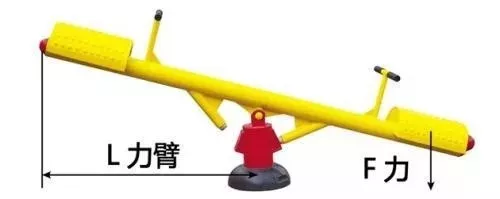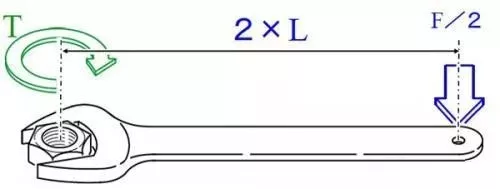In physics, moment refers to the tendency of a force to cause rotation around an axis or pivot point. It is a physical quantity that measures the rotational effect of a force on an object. Moment can be divided into two types: the moment about an axis and the moment about a point. Torque, also known as turning moment or twist moment, is a type of moment specifically referring to rotational forces.
In the formula:
![]()
- L is the distance vector from the rotation axis to the point of force application,
- F is the force vector.
Moment is also a vector quantity, and its unit of measurement is Newton-meters (N·m).
The concept of moment is ubiquitous in our daily life. For example, from the seesaw we played on as children to Archimedes’ famous quote, “Give me a lever long enough and a fulcrum on which to place it, and I shall move the world,” these all illustrate the meaning of moment. Similarly, in automobiles, torque is used in a similar context but refers to the rotational force transmitted through a series of drive shafts. The size of the torque directly influences the efficiency of power output, energy consumption, operational life, and even safety performance.
Difference Between Moment and Torque
- Scope: The range of moment is broader. Any force multiplied by the distance from the pivot (lever arm) is considered a moment. However, torque specifically refers to the moment acting on a rotating object.
- For example, when a car’s wheels rotate, the frictional force between the wheels and the ground multiplied by the wheel radius is called torque. This is still a type of moment. But when using a bottle opener to open a beer bottle, we call it a moment, not a torque.
Difference Between Torque and Torsion
- Torque refers to the turning moment or force couple that causes rotation in mechanical components (and other objects with a tendency to rotate). When a component is subjected to torque, it will undergo some form of twisting deformation, which could involve elastic or plastic deformation. Therefore, torque is sometimes referred to as twisting moment or torsion.
- In engineering, torque is more commonly used, while torsion often refers to the twisting deformation caused by torque.
Moment, Torque, and Torsion in Motors
In electric motors, the terms moment, torque, and torsion are used interchangeably. In most cases, only one of these terms is used in a single article or book. While these terms are applied in different contexts, in electric motors, they all refer to the rotational force generated by the rotor windings, which drives the mechanical load. The term “moment” refers to the product of the force and the perpendicular distance from the pivot point (the axis of rotation).
In summary:
- Moment is the general term for any rotational force or torque caused by a force applied at a distance.
- Torque is specifically used in mechanical systems, particularly for rotational systems.
- Torsion refers to the twisting deformation caused by a torque.
In electric motors, moment, torque, and torsion are often used synonymously, as they all describe the rotational force produced by the motor’s rotor, which is used to drive mechanical loads.

